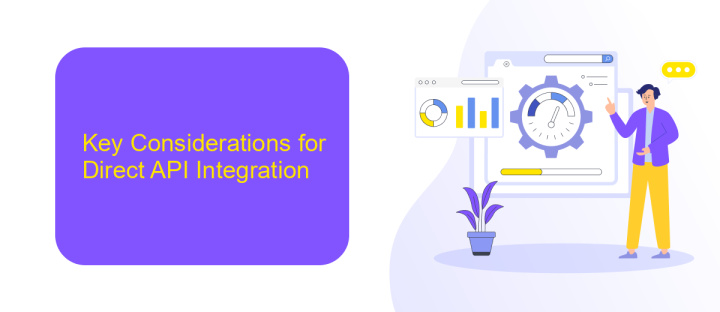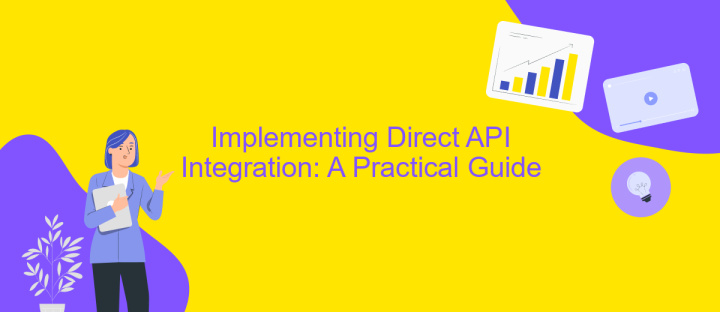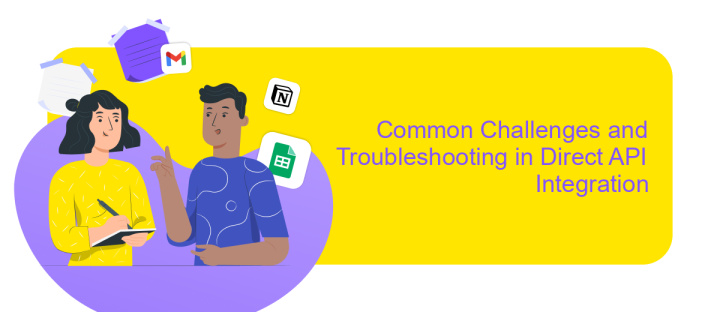Direct API Integration
Direct API integration is a pivotal component in modern software development, enabling seamless communication between different applications. By allowing direct access to an application's features and data, it facilitates efficient data exchange and enhances functionality. This integration method not only streamlines processes but also reduces the need for manual intervention, thus improving overall system performance and user experience. Understanding its importance is crucial for developers and businesses alike.
Understanding Direct API Integration and its Benefits
Direct API integration is a method of connecting applications directly to external services, enabling seamless data exchange and functionality enhancement. This integration eliminates the need for intermediaries, allowing applications to communicate directly with each other. By leveraging APIs, businesses can enhance their systems’ capabilities, access real-time data, and improve operational efficiency.
- Efficiency: Direct integration reduces latency, ensuring faster data transfer and processing.
- Cost-effectiveness: It minimizes the need for additional software or middleware, reducing overall costs.
- Scalability: Direct APIs can easily scale with business needs, accommodating increased data volumes and user demands.
- Customization: Offers the flexibility to tailor integrations to specific business requirements.
- Improved Security: Direct connections reduce potential security vulnerabilities associated with third-party intermediaries.
Adopting direct API integration can significantly transform business operations by streamlining processes and enhancing the overall user experience. Organizations can maintain competitive advantage by rapidly adapting to technological changes and meeting customer expectations. As businesses continue to evolve, the importance of efficient and reliable data exchange through direct API integration becomes increasingly critical.
Key Considerations for Direct API Integration

When embarking on direct API integration, it's crucial to understand the specific requirements and capabilities of the API you intend to integrate. This involves thoroughly reviewing the API documentation to comprehend the endpoints, authentication methods, and data formats. Ensuring you have a clear understanding of these elements will help streamline the integration process and prevent potential issues. Additionally, consider the scalability and reliability of the API, especially if it will be handling large volumes of data or critical operations.
Another key consideration is the choice of tools and platforms to facilitate the integration. Utilizing services such as ApiX-Drive can significantly simplify the process by providing a user-friendly interface and automation capabilities. ApiX-Drive can help reduce the technical overhead, allowing you to focus on strategic tasks rather than the intricacies of coding. Furthermore, it's important to establish robust error-handling mechanisms and logging to monitor the integration's performance and quickly address any issues that may arise. Proper testing and validation are also essential to ensure the integration meets your business needs and functions seamlessly.
Implementing Direct API Integration: A Practical Guide

Direct API integration is a powerful method for connecting applications, enabling seamless data exchange and enhancing functionality. To implement it effectively, one must understand the API's documentation, which provides essential details about endpoints, request methods, and authentication requirements. This foundational knowledge is crucial for successful integration.
- Begin by obtaining API credentials, such as API keys or tokens, from the service provider.
- Set up a development environment with necessary tools and libraries to facilitate API requests.
- Test API endpoints using tools like Postman to ensure they return expected responses.
- Write code to handle API requests and responses, incorporating error handling and logging mechanisms.
- Integrate and validate the API within your application, ensuring that it meets business requirements.
After completing these steps, monitor the API integration for performance and reliability, making adjustments as needed. Regularly review API documentation for updates, as changes may impact your integration. By following these guidelines, you can achieve a robust and efficient direct API integration, enhancing your application's capabilities and user experience.
Common Challenges and Troubleshooting in Direct API Integration

Direct API integration can be a powerful tool, but it often presents several challenges. One common issue is the complexity of understanding the API documentation, which can be overwhelming for developers. Additionally, ensuring seamless communication between different systems requires careful handling of data formats and protocols.
Another frequent challenge is managing authentication and authorization. APIs often require secure access tokens, and handling these tokens securely can be tricky. Rate limiting is another aspect that can cause unexpected interruptions if not properly managed, leading to potential service disruptions.
- Understanding and interpreting complex API documentation
- Handling data format inconsistencies and protocol mismatches
- Managing secure authentication and authorization processes
- Dealing with rate limiting and avoiding service interruptions
Troubleshooting these challenges involves a combination of thorough testing and effective monitoring. Utilizing logging tools can help identify issues quickly, while setting up alerts for rate limits and authorization errors can prevent downtime. By addressing these common challenges proactively, developers can ensure a smoother integration process.
Best Practices and Future Trends in Direct API Integration
When implementing direct API integration, adhering to best practices is crucial for seamless connectivity and performance. Start by ensuring comprehensive documentation is available, which facilitates easier understanding and usage of the API. Prioritize security by employing authentication methods like OAuth and regularly updating security protocols. Testing is another essential practice; utilize automated testing tools to verify functionality and identify issues early. Additionally, consider using services like ApiX-Drive, which simplify the integration process by providing user-friendly interfaces and automation capabilities, reducing the need for extensive coding.
Looking to the future, trends in direct API integration are set to evolve with advancements in technology. The rise of AI and machine learning will likely enhance API capabilities, enabling more intelligent data processing and decision-making. Furthermore, the increasing demand for real-time data will drive the development of faster and more efficient APIs. As businesses strive for greater agility, low-code and no-code platforms, such as ApiX-Drive, will gain popularity, allowing non-technical users to create integrations with ease. Staying informed about these trends will ensure that your API strategies remain competitive and effective.
FAQ
What is Direct API Integration?
How do I get started with Direct API Integration?
What are the common challenges in Direct API Integration?
Can I set up Direct API Integration without coding skills?
How can Direct API Integration benefit my business?
Apix-Drive is a universal tool that will quickly streamline any workflow, freeing you from routine and possible financial losses. Try ApiX-Drive in action and see how useful it is for you personally. In the meantime, when you are setting up connections between systems, think about where you are investing your free time, because now you will have much more of it.

